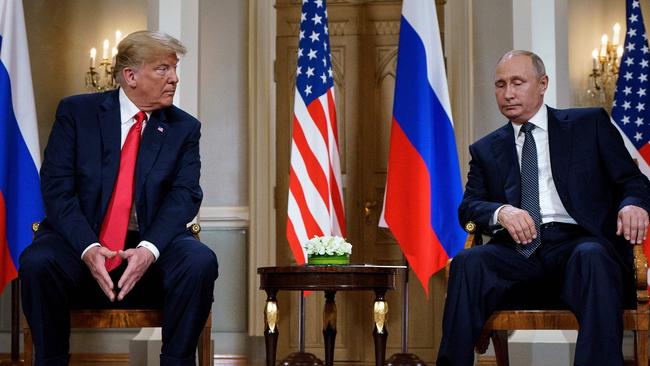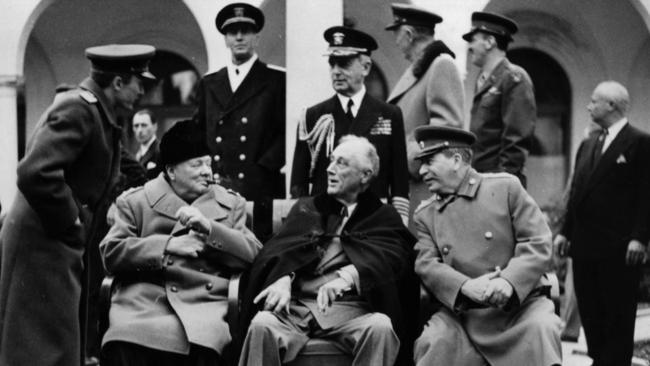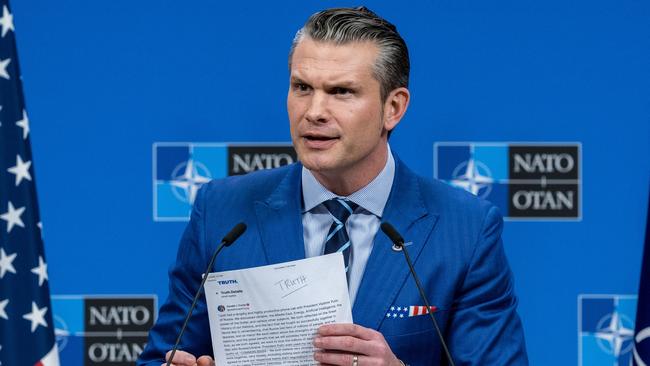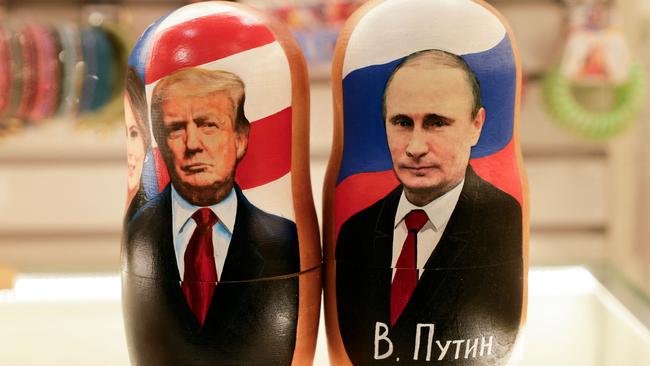If this is peace, the world faces even more conflict
If Ukraine is forcibly partitioned, the outcome will be, at best, a Cold War 2.0 with Putin emboldened and China encouraged to risk its own military adventures.

The 80th anniversary of the Yalta conference fell this week, evoking unpleasant memories across eastern Europe of how Stalin cornered Roosevelt and Churchill into accepting an extensive Soviet sphere of influence. Now two big powers, the United States and Russia, are sharpening their knives for a new carve-up, one that seeks an armed continental peace in return for the capitulation of Ukraine. Europe is not at the table and Volodymyr Zelensky has only been consulted after dessert has been served.
It is a sorry spectacle, too early perhaps to talk of an American surrender since the negotiating ground has been set out in such sparse detail. All we know so far is what Russia does not want. A firm “no” to American troops on the ground, Ukrainian membership of NATO, a militarised neighbour, the western arming of Kyiv, the return of territory occupied by Russia. And we know what the US does not want: all of the above. That suggests the US, despite President Trump’s confidence in his deal-making abilities, is on shaky ground.

If it sets a precedent for US indifference to Europe, what will happen to Russia’s other unhappy neighbours? Georgia, say, or Moldova? The post-war history of the Soviet Union was peppered with brutally crushed uprisings: Hungary in 1956, Czechoslovakia in 1968, and Polish martial law in 1981. They were the distinguishing features of the Cold War and if Ukraine is forcibly partitioned, nodded through by the West, the outcome will be, at best, a Cold War 2.0 with Putin emboldened to destabilise the frontline of NATO.
After the Second World War, Stalin looked for ways of continuing the Soviet war economy and began to talk of an inevitable new conflict. Putin is likely to emulate that after a notional ceasefire in Ukraine. That’s not peace.
A skewed resolution could also encourage Russia’s silent partner, China, to risk its own military adventures, notably the possible invasion of Taiwan. China has learnt from Trump’s approach to Putin that it must always hold bargaining counters in reserve, forcing the US administration to return to neo-isolationist positions rather than gamble on an expensive and possibly escalating war. An enforced peace settlement does not bring peace but rather sets a pattern of destabilisation. Iran and North Korea, both junior allies in Putin’s war, will be emboldened.
It is, of course, difficult for Europeans to criticise the Trump-Putin initiative. The underspending on defence by European NATO allies – Poland being the notable exception – left the US with the impression that Ukraine’s fate was a low priority. Were European weapon deliveries designed simply to slow down the Russian advance or push Putin’s forces out of Ukraine and restore its 2014 borders? Were they rooting for a decisive victory for Kyiv? Greater, speedier aid could have led to Moscow’s defeat on the battlefield and the fall of Putin’s regime. But this was deemed by many, especially Germany, to be a greater risk than maintaining a simmering if non-nuclear war on their borders.

Joe Biden’s administration also played its part. He authorised billions of dollars of armaments for Ukraine, but often attached hampering conditions: the long-distance weaponry, he stipulated, should not be fired at targets deep inside Russian territory even if the bases were being used to fire at Ukrainian civilian infrastructure. The fear of nuclear escalation, whipped up by Putin, paralysed the West’s defensive effort and sapped NATO’s credibility as a protector of the European order.
Appeasement has many fathers. With no clear war aim behind western support for Ukraine, there was always confusion over how long it would last and what would constitute success for Kyiv’s forces. That strategic muddle kept Putin going in the hope that Ukraine and its western allies would reach a breaking point.

Putin has allocated US$145 billion to defence in his 2025 budget, more than double the figure in 2021. It’s money that will be spent on making Russia stronger. That’s why Kaja Kallas, the EU’s foreign policy chief, said before the Munich conference: “Any deal behind our backs will not work, any agreement will also need Ukraine and Europe – appeasement will always fail.”
Trump has ended three years of ambiguity on Ukraine and, while that might be driven by personal vanity, perhaps it will help unblock the intellectual congestion about the future of the alliance, the nature of the common threat and the relative balance between US and European contributions.
It needs a public debate which includes Ukraine and others who are cowed by their proximity to a muscular but increasingly desperate Russia. The US president is said to covet the Nobel peace prize; he is unlikely to make the shortlist if he merely enables Putin to crush the lifeblood out of Ukraine. Whatever happens next must lead to a just and honest peace and that comes through thoughtful mediation rather than grandstanding.
The Times





To join the conversation, please log in. Don't have an account? Register
Join the conversation, you are commenting as Logout